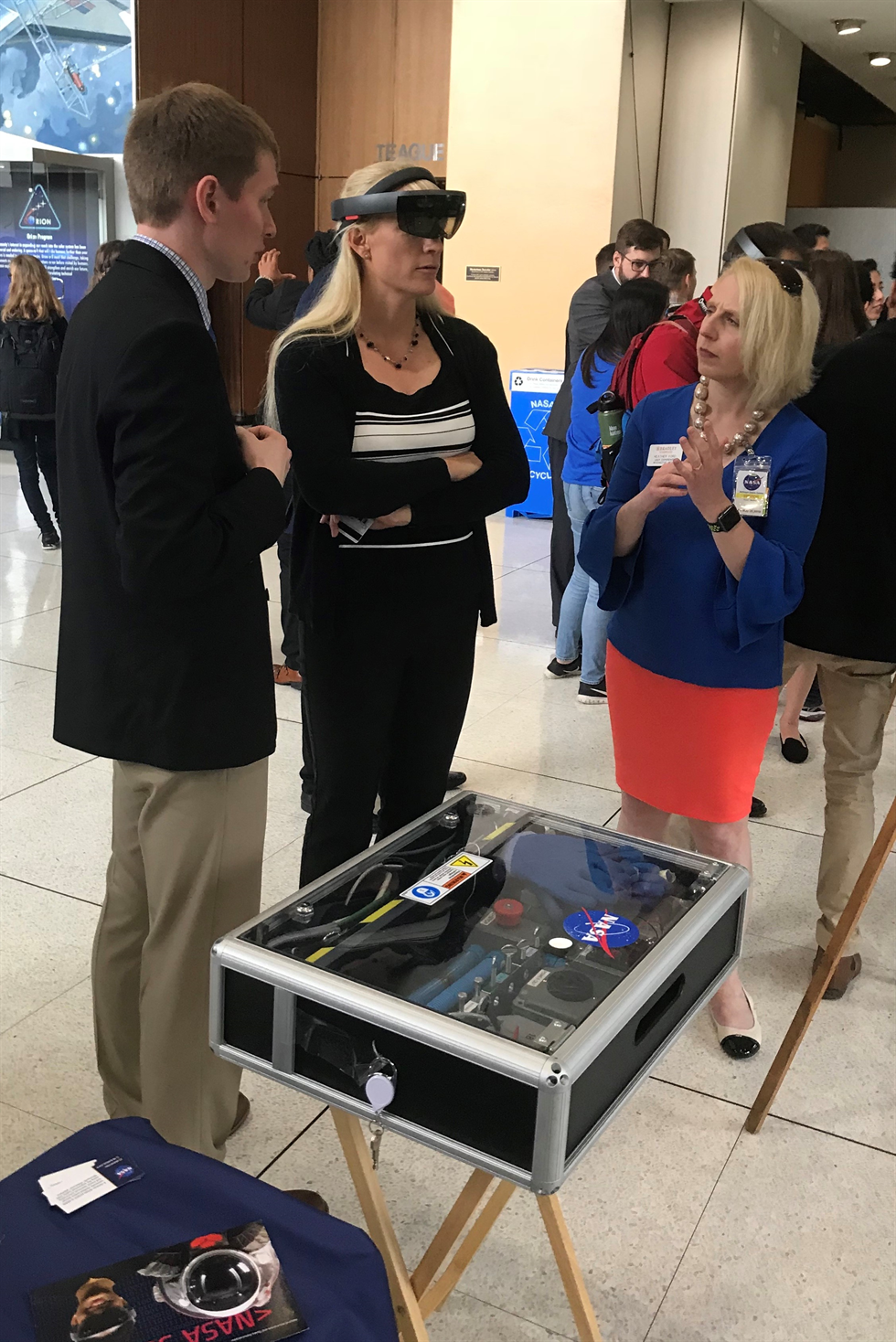Students Contribute to Next-Generation Lunar Spacesuit During Pandemic
With health and safety of paramount importance, the COVID-19 pandemic prompted a major shift to a virtual working environment for individuals across many industries. While this paradigm shift certainly brought about major roadblocks for many, for students from 21 colleges and universities, it represented the opportunity to demonstrate their resilience and keep up their hard work with hopes that their spacesuit designs will generate positive contributions toward NASA’s Artemis mission. Artemis aims to land the first woman and next man on the Moon by 2024.
The NASA Spacesuit User Interface Technology for Students challenge, commonly known as NASA SUITS, is one of NASA’s Artemis Student Challenges. The one-of-a-kind outreach program tasks students to design and create spacesuit information displays within augmented-reality environments capable of assisting astronauts during spacewalking activities on the lunar surface.

Brandon Ray, a Southwestern Indian Polytechnic Institution
student, discusses how his team tested their design in real-world scenarios. Image courtesy of Crystal Del Rosso and
Brandon Hargis
Across the nation, students from several institutions of higher education began working on their design proposals in the fall of 2019 with the expectation that, if selected, they would have the opportunity to visit NASA’s Johnson Space Center in April to test their creative solutions during the annual NASA SUITS on-site test week. Twenty-one of these institutions were selected and began making great strides in development. However, as the pandemic began limiting travel and caused schools to shift to virtual operations or close altogether, all in-person aspects of the program had to be canceled. This presented new challenges for all students participating, as they lost access to their schools’ resources and had to adapt to new methods of remote communication.
Paromita Mitra, head of the Displays & Control portion of the Informatics Subsystem for the xEMU — or Exploration Extravehicular Mobility Unit — spacesuit, recognized that the new learning environment forced the students to be “very flexible and innovative,” even more so than the challenge had required of them initially.
Despite the hardships the participants encountered while working in the midst of a pandemic, 12 teams persevered, completing their designs and presenting the final solutions on June 11 through a Microsoft Teams live event. Teams from Boise State University, Columbia University, Embry-Riddle Aeronautical University, Harvard University, Kent State University, Johns Hopkins University, Norco College, North Carolina State University, Southwestern Indian Polytechnic Institute, Texas A&M University, the University of Akron, the University of Baltimore, the University of Colorado-Boulder, the University of Massachusetts-Boston, and the University of Michigan presented their user-interface designs to a panel of comprised of astronaut Nick Hague, the Johnson’s Extravehicular Activity office manager, the Spacesuit Informatics technical team, Microsoft representatives and Magic Leap’s co-founder.
NASA’s Office of STEM Engagement also recognizes the efforts of Chapman University, Duquesne University, Riverside City College, Stevens Institute of Technology, the University of North Texas, and Virginia Polytechnic Institute and State University, who were forced to stop their projects as the schools shut down due to COVID-19.
The panelists emphasized that the students’ designs and ideas will have a real impact on the development of new technologies to facilitate lunar-surface exploration for the Artemis mission, particularly those that will be implemented for the next-generation xEMU spacesuit.
As Hague remarked, a “significant technological challenge”
that Artemis is trying to tackle is how to perform spacewalks on the Moon’s
surface, and the students’ ideas will “lead to the breakthroughs” that will
make this possible as they help “discover the questions we didn’t even think to
ask.”
Chris Hansen, head of the Extravehicular Activity Office, said that he was “super happy with the solutions offered to NASA by this year’s SUITS teams.” He added that just like the xEMU is the future of space exploration, students like the ones participating in the challenge are the future of NASA.

Past SUITS sessions have included hands-on learning at NASA's Johnson Space Center. Taken in June 2018, during the pilot year of SUITS, North
Dakota University participant Anima Sabale (at right) takes part in a SUITS
challenge. She later netted employment at Johnson. Image Credit: NASA
For more information about Artemis Student Challenges,
visit: https://www.nasa.gov/stem/artemis.html








